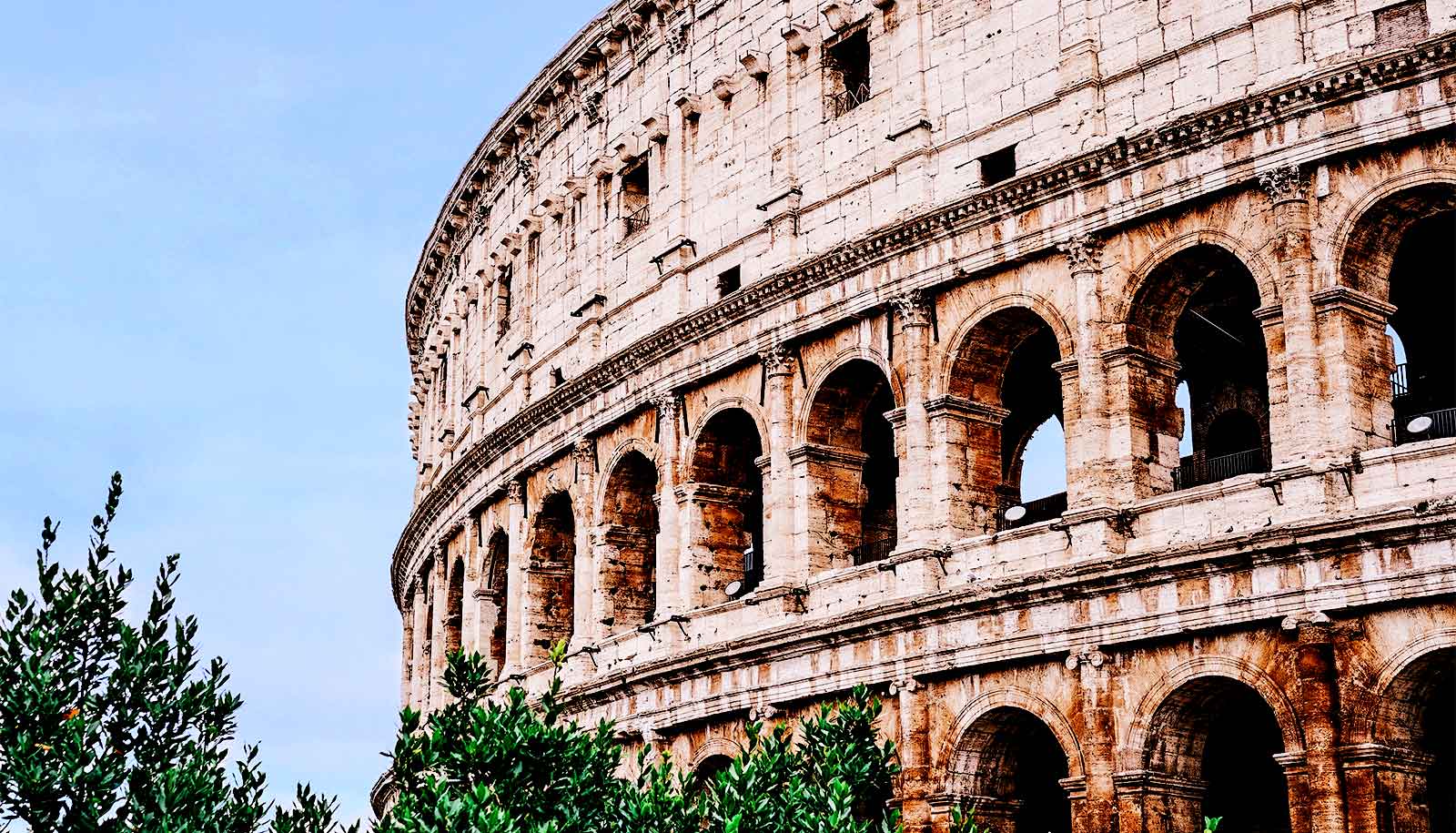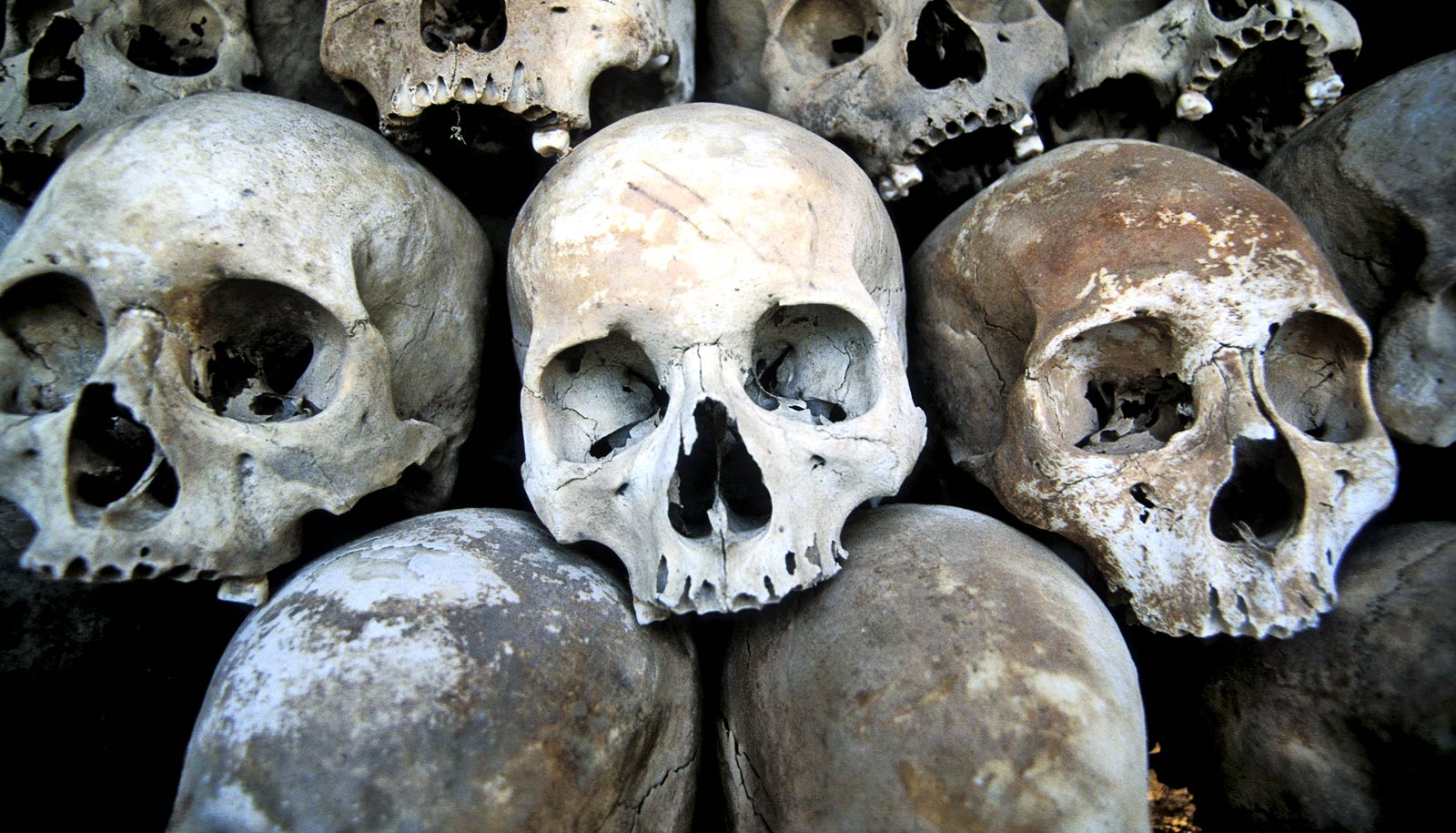A new genetic history of ancient Rome reveals how political and historical events shaped the city’s dynamic population, researchers report.
The study focuses on the ancient DNA of individuals from Rome and adjacent regions in Italy. Those genetic data reveal at least two major migrations into Rome, as well as several smaller but significant population shifts over just the last few thousand years, according to co-senior author Jonathan Pritchard, a professor of genetics and biology at Stanford University.
Notably, DNA analysis revealed that as the Roman Empire expanded around the Mediterranean Sea, immigrants from the Near East, Europe, and North Africa pulled up their roots and moved to Rome. This significantly changed the face of one of the ancient world’s first great cities, says Pritchard.
“This study shows how dynamic the past really is,” says co-lead author Hannah Moots, a graduate student in anthropology. “In Rome we’re seeing people come from all over, in ways that correspond with historical political events.”
Uncovering genetic history
In the last decade or so, an increasing number of studies have used DNA sampled from ancient skeletons to fill in important details of human history. Rome presented an interesting opportunity to use the same ancient DNA techniques to fill in details left out of the historical record.
“The historical and archaeological records tell us a great deal about political history and contacts of different kinds with different places—trade and slavery, for example—but those records provide limited information about the genetic makeup of the population,” Pritchard says.
To find out what that makeup looked like, the team partnered with a host of European researchers, including senior authors Alfredo Coppa, a professor of physical anthropology at Sapienza University, and Ron Pinhasi, an associate professor of evolutionary anthropology at the University of Vienna, to gather 127 human DNA samples from 29 sites in and around Rome dating from between the Stone Age and medieval times.
An analysis of some of the earliest samples more or less comports with what has been found around Europe—they represent an influx of farmers primarily descended from early agriculturalists from Turkey and Iran around 8,000 years ago, followed by a shift toward ancestry from the Ukrainian steppe somewhere between 5,000 and 3,000 years ago. By the founding of Rome, traditionally dated to 753 BCE, the city’s population had grown in diversity and resembled modern European and Mediterranean peoples.
The rise and fall of ancient Rome
But for Pritchard, Moots, and co-first authors Margaret Antonio, a graduate student in biomedical informatics, and Ziyue Gao, a postdoctoral fellow in Pritchard’s lab, the most interesting parts were yet to come. Although Rome began as a humble city-state, within 800 years it had gained control over an empire extending as far west as Britain, south into North Africa, and east into Syria, Jordan, and Iraq.
As the empire expanded, contemporary accounts and archaeological evidence indicate there were tight connections between Rome and other parts of its domain built through trade, military campaigns, new roads, and slavery—and the genetic history corroborates but also complicates the story. There was a massive shift in Roman residents’ ancestry, the researchers found, but that ancestry came primarily from the Eastern Mediterranean and Near East, possibly because of denser populations there relative to the Roman Empire’s western reaches in Europe and Africa.
The next several centuries were full of turmoil: the empire split in two, diseases decimated Rome’s population, and a series of invasions befell the city. Those events left a mark on the city’s population, which shifted toward western European ancestry. Later, the rise and reign of the Holy Roman Empire brought an influx of central and northern European ancestry.
A shifting population
The lesson, Pritchard says, is that the ancient world was perpetually in flux, both in terms of culture and of ancestry.
“It was surprising to us how rapidly the population ancestry shifted, over timescales of just a few centuries, reflecting Rome’s shifting political alliances over time,” Pritchard says. “Another striking aspect was how cosmopolitan the population of Rome was, starting more than 2,000 years ago and continuing through the rise and dissolution of the empire. Even in antiquity, Rome was a melting pot of different cultures.”
In future studies, the researchers hope to expand the geographic range of ancient DNA they can sample. Among other things, that would allow them to say with more certainty how ancient populations mixed and moved around. In the long run, they’re also hoping to study more than ancestry and migration. For example, the group also plans to study the evolution of traits like height, lactose tolerance, and resistance to diseases such as malaria that may have changed over time, Moots says.
The research appears in Science.
Additional researchers from Sapienza University of Rome; University College Dublin; the University of Vienna; the University of Torino; the University of Pisa; the Italian Ministry of Cultural Heritage and Activities; the University of Coimbra; the Superintendent for Archaeology, Fine Arts and Landscape for the provinces of Sassari and Nuoro; Roma Tre University; the Cultural Heritage Curator for the Municipality of Rome; the Special Superintendent for Fine Arts and Landscape of Rome; the Museum of Civilizations, Rome; the University of Rome Tor Vergata; the University of Tuscia; the Coordination Office for Special and Intersectoral Projects, Rome; Aix-Marseille University; the Vatican Museums; Naples Eastern University; and the University of Foggia contributed to the work.
Funding for the work came from the National Science Foundation; a Stanford Interdisciplinary Graduate Fellowship; the Stanford Archaeology Center; the Stanford Anthropology Department; the Howard Hughes Medical Institute; and the Italian Ministry of Education, Universities and Research.
Source: Stanford University

